Three decades later, the Hudson-Bergen Light Rail line still has no Bergen spur. How come?
This marks the 30th year since the U.S. Department of Transportation first infused the Hudson-Bergen Light Rail project with federal funds to build a first-of-its-kind project through two of New Jersey's densest and most populated counties.
Yet three decades on, the project still evokes controversy, criticized as an unfinished misnomer sinking further in bureaucratic stasis because the line has never been extended 10 miles into Bergen County, as originally planned.
Echoing prior generations of North Jersey officials, some 30 local, state and federal elected leaders and union representatives bemoaned on Friday the most recent setback the project received from the Federal Transit Administration.
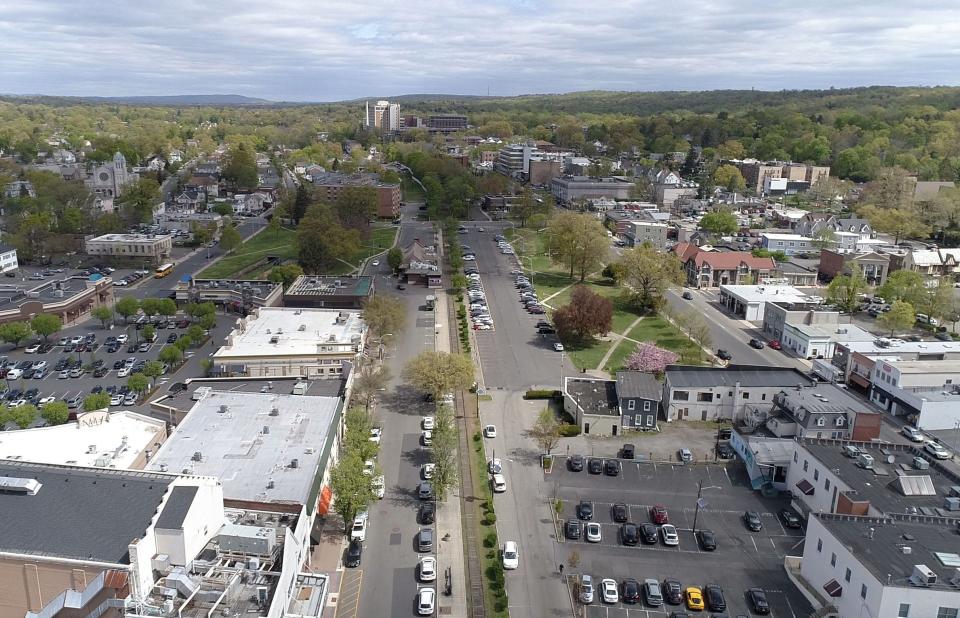
"Traffic has only gotten worse, the need for the light rail has only gotten worse, and when I got the call two weeks ago to let me know that the DOT had decided they were going to put a pause on this project ... I was outraged," said Judah Ziegler, Leonia's mayor, whose first term was in 1996, when the Hudson-Bergen Light Rail project first broke ground. "We cannot wait any longer."
It’s a conundrum that puzzles many.
In 1993, federal funding was first released to construct a $1 billion light rail system running north to south, parallel with the Hudson River, along North Jersey's “Gold Coast.” The original design was a 20-mile route with 33 stations from Bayonne through Jersey City, ending at the New Jersey Turnpike's Vince Lombardi Service Area in Ridgefield.
Story continues below photo gallery.
What ultimately got built was a 17-mile route through Hudson County with 24 stations that cost about $2.3 billion. It has largely been considered a success, going from 1.1 million riders after launching passenger service in April 2000 to about 16 million riders in 2019 — double the ridership of the Newark and Trenton light rail lines combined.
And about 90% of straphangers have returned to the Hudson-Bergen Light Rail line when compared with pre-pandemic numbers, a recovery far outpacing other modes of transit in the region.
Despite that success, expanding the light rail into Bergen County remained stalled as political cycles changed, community concerns festered, and plans were modified and downsized — all while costs ticked up.
The most recent version of the extension is a proposed 10-mile, seven-station spur known as the Northern Branch corridor, last estimated to cost about $2 billion.
Lack of state or local funding
The latest blow to the Bergen project came just weeks ago. The Federal Transit Administration told NJ Transit it had to throw out a 15-year-old environmental impact report that cost $9 million to produce. Now, the agency has to start over — a process that could take two years or more.
The expansion "remains a priority,” and much of the work in the old report “is still relevant and can be used as a starting point,” said NJ Transit spokesman Jim Smith.
However, for the FTA to even consider reexamining the project, one key detail that has been conspicuously missing for the last three decades must be included: a source of state or local funding.
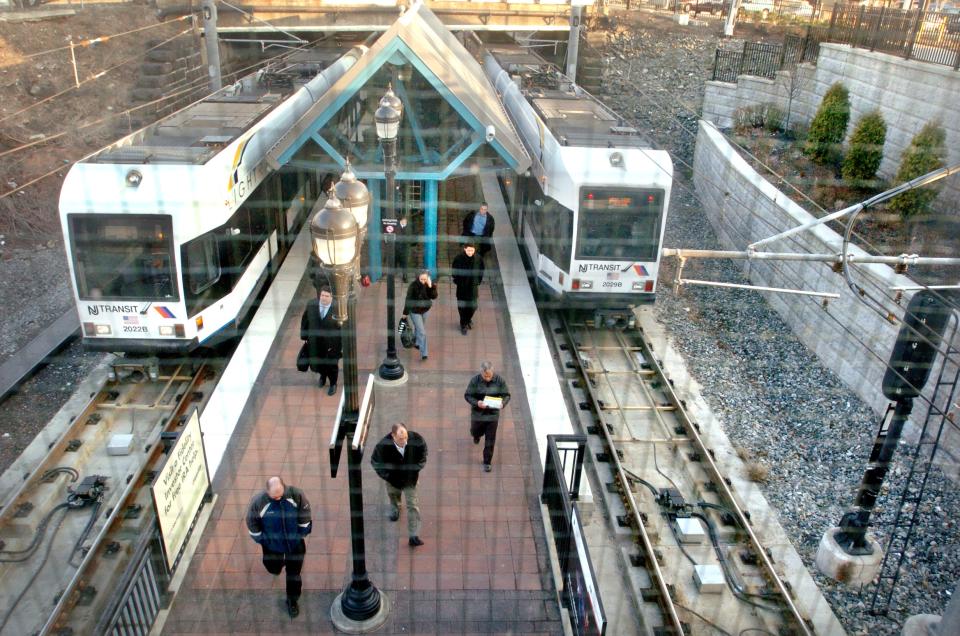
Paul Kincaid, a Biden-appointed associate administrator for communications and congressional affairs for the FTA, said local financial commitments, known as matches, are critical for projects to be eligible for federal grants so work can proceed.
“Without a secure commitment of these matching funds, it is not possible for projects like the Hudson-Bergen extension to move forward with any next steps toward eventually securing federal funding,” Kincaid said.
U.S. Rep. Josh Gottheimer, whose newly redrawn district includes Englewood — the last municipality on the proposed line extension — said Friday that the issue of money is a "red herring."
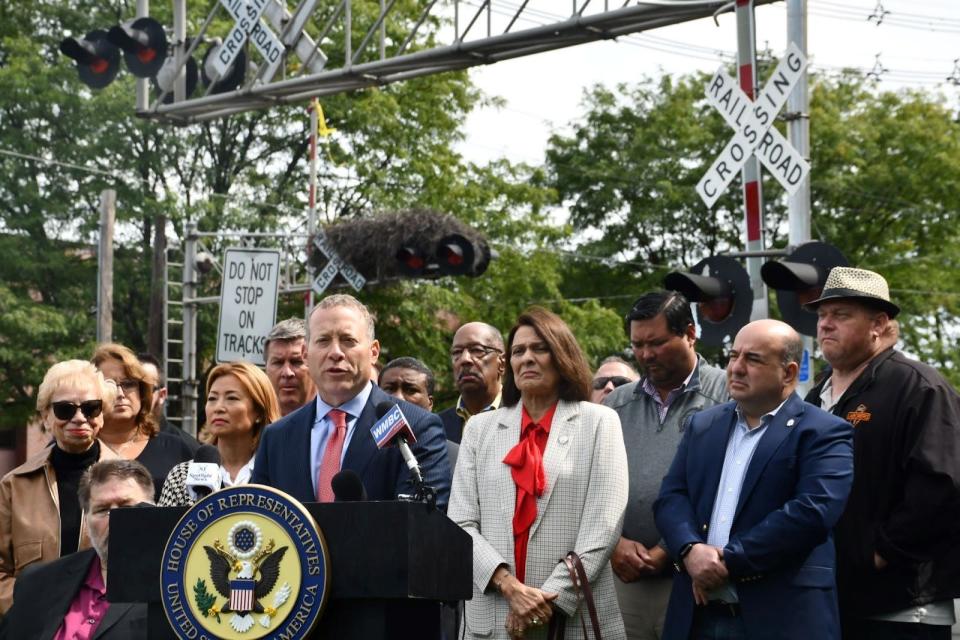
The state Legislature "can speak to why these dollars will be delivered for the match when we need them, but that has nothing to do with why [the FTA is] holding up this environmental impact approval," said Gottheimer, who sent a letter to Pete Buttigieg, secretary of the U.S. Department of Transportation, urging the department to expedite the approval process.
NorthJersey.com examined hundreds of newspaper articles and spoke to more than a dozen people involved with the Hudson-Bergen Light Rail project over the last 30 years to understand how it began, the challenges that have prevented the Northern Branch corridor from being built, and what it will take to finally finish the long misnamed Hudson-Bergen Light Rail.
Early doubts festered about Bergen extension
The idea for the Hudson-Bergen Light Rail was born out of a study conducted in the mid-1980s, which concluded that “a new light rail system connecting Hudson and Bergen counties in a north-south direction along the waterfront would best promote the development of the area.” It would resurrect an old Erie-Lackawanna route last used for passenger service in 1966 from West Nyack, New York, to Jersey City, and which still gets some use by CSX freight trains.
The project's first grant award in 1993 came with the enthusiastic backing of the Clinton administration. It broke ground in 1996 and became the first project in the country giving a single company the contract to design, build, operate and maintain the system, with the state Department of Transportation calling it a “model” for light rail development across the nation.
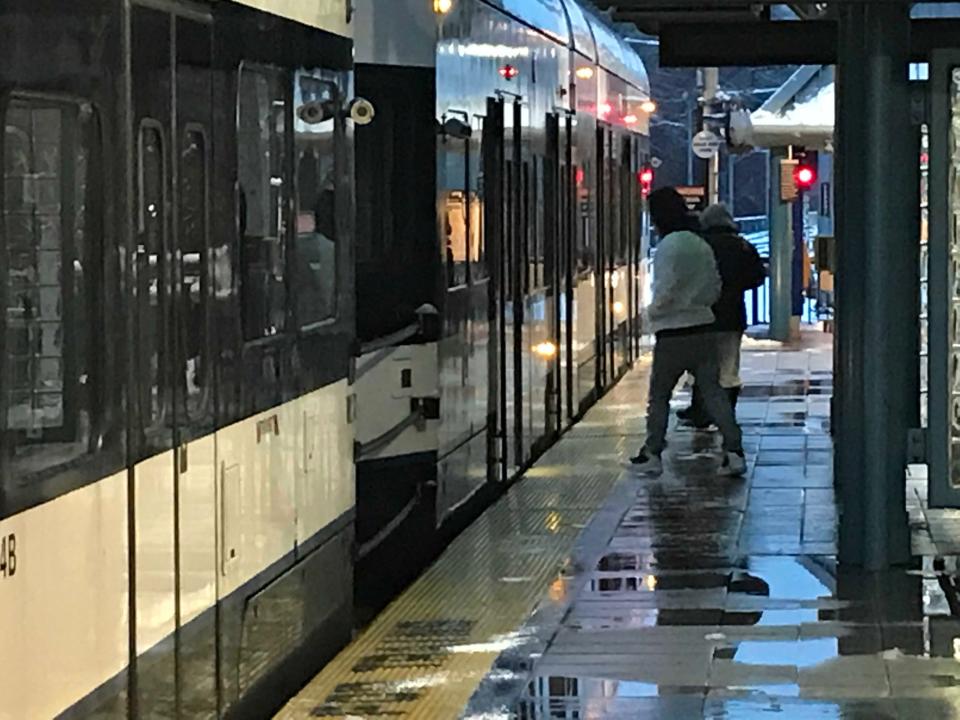
But locally, concerns about whether the Bergen portion of the rail line would be completed were already taking shape.
When it was decided that the first phase of the light rail would be constructed in Hudson County, worries began that it might never make it to Bergen.
“Maybe the year 2050 they’ll get the [light rail train] to Bergen,” Albert Cafiero, who headed Bergen County’s transit committee, told The Record in 1996 amid concerns that there wasn't a big enough push to make Bergen the starting point.
William “Pat” Schuber, then the Bergen County executive, also told The Record then that he had concerns the lag time between construction phases could doom the Bergen portion.
Schuber, now a lecturer at Fairleigh Dickinson University, told NorthJersey.com recently that there was a lot of political support for the project in 1996, but Hudson won out for the first phase of construction. Officials at NJ Transit said that was because Hudson County had the space for a rail yard to store the light rail vehicles.
“There was a limited pot of money, and it wasn’t quite a contest but it was a competition really between us and Hudson,” Schuber said. “That was probably political. … We still have the problem of dollars and cents.”
Debating the route, changing the plans
More questions about whether the project would be extended to Bergen soon followed.
By 1999, the Bergen expansion was missing from NJ Transit’s five-year capital plan — and the first phase of the project was broken into three as costs rose. Then, in 2001, officials began debating what the route through Bergen County should be, and more studies were conducted.
In 2005, a whole new concept was proposed by Steve Santoro, then NJ Transit’s chief of new rail construction, who later became the agency’s executive director.
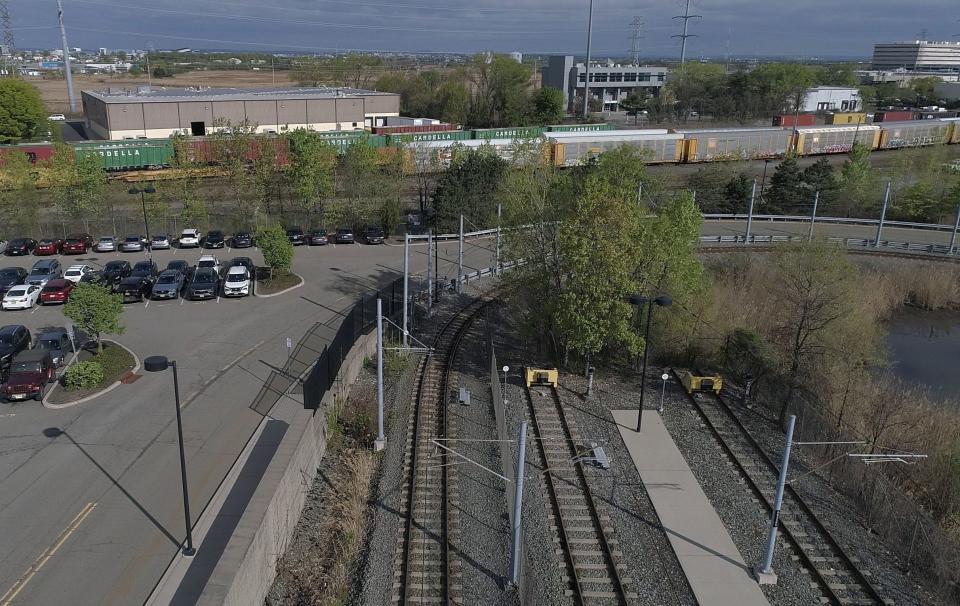
At that time, Access to the Region's Core plans were coming into focus. ARC was the original name of plans to rehabilitate rail tunnels and build new ones under the Hudson River into New York Penn Station, a project later scuttled by Gov. Chris Christie.
Santoro said the agency was studying whether it should use large commuter diesel trains on the Bergen County rail path, instead of continuing the light rail line. The idea was that those trains could continue into Manhattan via the ARC tunnels, or riders could get off and switch to the existing light rail at its last stop in North Bergen at Tonnelle Avenue.
After that, at least $7 million was spent on additional studies, and debate ensued for four years between local officials who favored a full light rail line into Bergen County and NJ Transit officials pushing for a diesel system.
'This project will break ground in 2011'
Finally, in 2009, then-Gov. Jon Corzine ended the years-long fracas and declared that NJ Transit would return to the original plan to extend the light rail system into Bergen County. The cost would be about $900 million.
“It will be accomplished. This project will break ground in 2011," Corzine said when announcing the decision in 2009.
Meanwhile, residents in Tenafly — the last stop on the proposed Bergen branch, which would also go through Fairview, Ridgefield, Palisades Park, Leonia and Englewood — disliked the idea enough to put a non-binding measure on the ballot in 2011. It showed that voters disapproved of the light rail coming to the borough 2-to-1.
In 2013, NJ Transit agreed to eliminate the Tenafly station and modified plans to have Englewood Hospital as the last stop.
Unfulfilled promises
As the years ticked by and myriad issues mounted over the Bergen plans, promises were made that once those details were resolved, the funding would be there to get the remaining 10 miles of the project completed.
But those promises weren't fulfilled.
The closest commitment came in 2016 in a handshake deal to fund the Bergen extension as part of an agreement with Christie and legislative leaders to increase the gas tax for the Transportation Trust Fund, the main source of capital funds for NJ Transit.
Paul Sarlo, a state senator from Wood-Ridge who helped orchestrate the deal, told reporters in 2016 that the informal agreement would fund both the light rail planned for Bergen and a Glassboro-Camden Light Rail plan in South Jersey.
"There is an understanding between all stakeholders, North and South Jersey and the governor's office, that when the plan is developed, those two projects will be funded,” Sarlo said at the time.
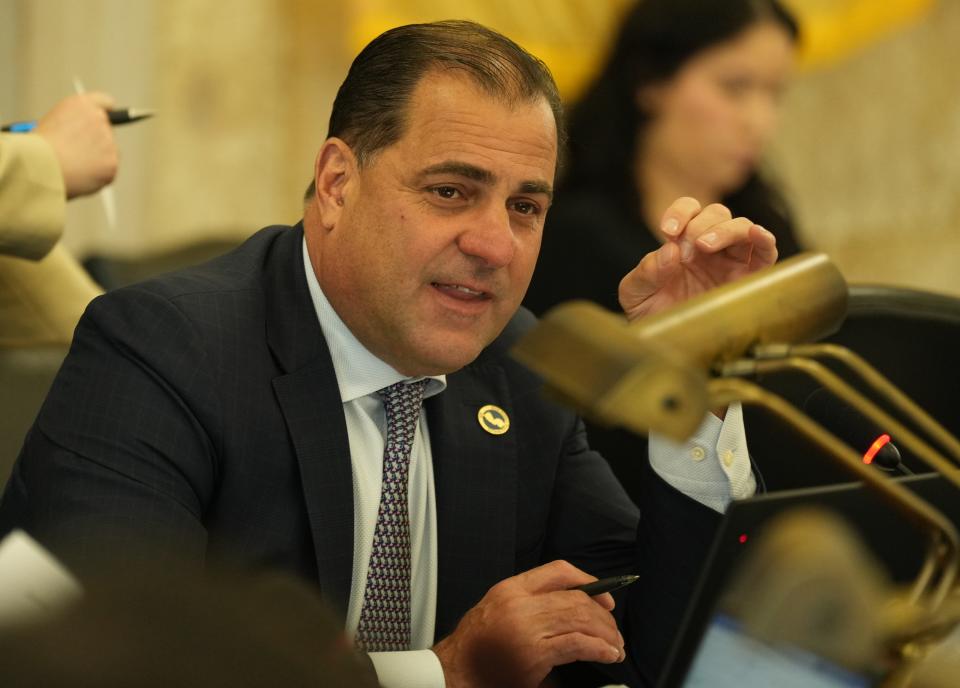
Asked what came of that agreement, Sarlo told NorthJersey.com recently, “I’m not aware of that commitment going away. We’re going to need to get to the bottom of this.
“There was always money there on the state side to show support; may not have been money to fund the full project, but there was always a commitment and a willingness from the state to go ahead with this,” he said. “We definitely need more answers on why it needs to restart, why would [the FTA] throw away all of the due diligence and all of the studies and engineering studies — makes no sense.”
Jersey-focused transit
Asked whether Gov. Phil Murphy will demonstrate a financial commitment to the project, a spokesperson in his office didn’t answer the question and referred it to NJ Transit.
There is $98 million allocated to the project's next phase, but beyond that “the funding sources are still to be determined,” said Smith, the NJ Transit spokesman.
Zoe Baldwin, New Jersey director for the Regional Plan Association, said that with the Transportation Trust Fund due to be reauthorized again next summer, it's time to push state leadership to make the Bergen extension a true priority.
“The hard financial commitment is the only thing that’s going to get us out of this limbo,” Baldwin said. “We can’t give the feds another promise ring.”
Baldwin said an explicit commitment to fund this project would mean getting it included in the state Transportation Improvement Plan, an annual document that lays out what projects have funding, where that money is coming from and how much is expected to be spent over four years.
But the project has to advance to preliminary engineering and have "designated and committed federal funding" to get to that stage, said David Behrend, executive director of the North Jersey Transportation Planning Authority.

Much as in 1996, when the Clinton administration was eager to fund public transportation, the Biden administration is currently making historic investments in public transportation with the Infrastructure and Investment Jobs Act.
With federal grant money available, it would seem time finally to get this project moving — especially since that other long-talked-about light rail project in the southern portion of the state, the Glassboro-Camden Light Rail line, recently moved into the preliminary engineering phase, thanks to a $200 million boost from the South Jersey Turnpike Authority.
But in the northern tier of the state, competition to fund public transportation projects is fierce, especially as some $18.4 billion of federal and state money is being poured into the replacement for the Portal Bridge, which carries the Northeast Corridor line across the Hackensack, as well as the new Gateway rail tunnel project under the Hudson.
Despite that, Baldwin said projects such as the Northern Branch corridor and Camden-Glassboro Light Rail check off boxes on numerous state goals, including equity, environment, traffic reduction and economic development.
They’re "critical pieces of infrastructure that are focused on New Jersey,” she said. “The schedules are geared toward getting around these individual communities … and they really also fit into a larger culture of transit ridership that New Jersey would do really well to develop and capitalize on.”
'There will be a consequence'
Absent dedicated state or local money, the Bergen extension will be dead — and the existing tracks and right of way for the light rail will be slowly wrapped in the vines of bureaucracy, allowing time to camouflage it from view.
Meanwhile, air quality in Bergen, the state’s most populous county, continues to deteriorate, earning an F this year for the most days of high smog levels in the state over a three-year period, according to an annual report from the American Lung Association.
And county leaders say traffic in Bergen is worse than ever.
“It’s time to start thinking about Bergen County,” said Tom Sullivan, chairman of the Bergen County Board of Commissioners, who has urged state leaders to get the light rail project done. “We can help residents ease their commute," he said. "You can take off an hour or two off their commute every day. That’s a home run.”
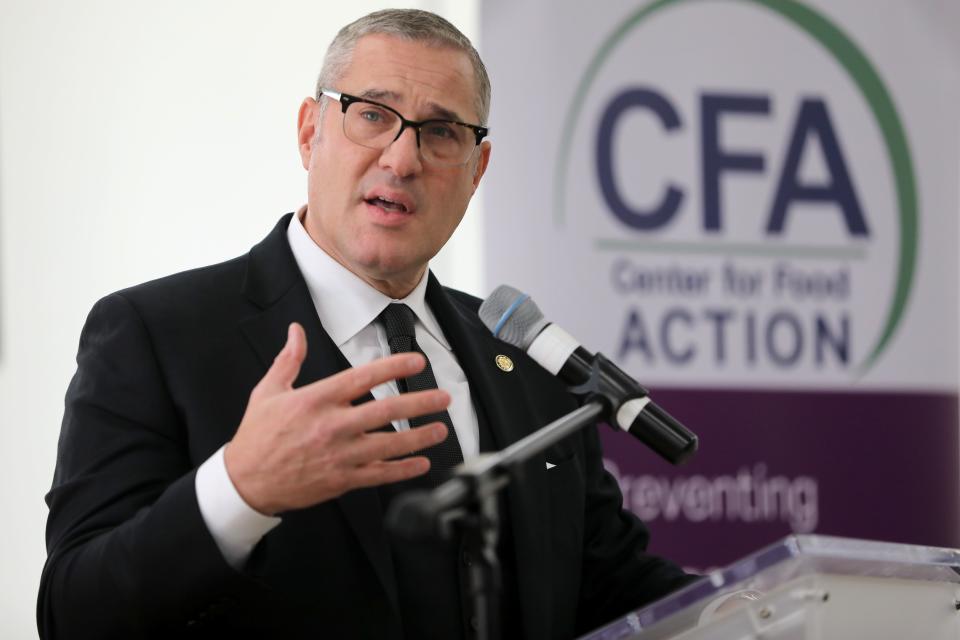
Michael Wildes, mayor of Englewood, where the line would end, said failing to improve public transportation will deter young people from moving to suburban areas.
“It’s really shame on the Legislature, who didn’t create the funding for this — and taunts it about when there’s campaign season — and does nothing intermittently,” Wildes said. “There will be a consequence, and that will affect the quality of professionals that we will draw to live in our city, patronize our essential business district, and the kind of talent we can expect to bring into Englewood’s professional corridor.
"We, as leaders — whether it’s municipal, state or federal — need to facilitate a better quality of life so that decisions are enhanced by your living in the Garden State,” Wildes said.
Assemblywoman Shama Haider, who has made this project a priority since joining the Assembly in 2021 by sending letters to NJ Transit and calling in to its meetings for updates, said after hearing about the recent FTA setback that she is more energized to get this done.
"I will not give up. I’m going to stick with this. I will keep talking about it. I’m going to keep making a noise; I don’t know if anybody is listening," Haider said. "I will keep on talking to anybody and everybody about it."
This article originally appeared on NorthJersey.com: Hudson-Bergen Light Rail still has no Bergen NJ spur. Why?

